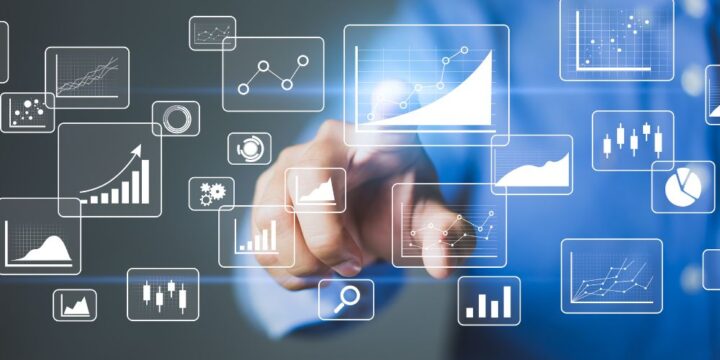Describe Data Analytics in a few words

Organizations can use data analytics services to examine all of their data, including real-time, historical, unstructured, structured, and qualitative data, to find trends and create insights that can be used to guide and, in some circumstances, automatically execute choices, bridging intelligence and action. The top systems available today enable the entire analytical process, from accessing, preparing, and processing data to operationalizing insights and tracking outcomes.
Businesses may digitally improve their operations and corporate cultures with the use of data analytics, which also helps them make more creative and progressive decisions. Algorithm-driven businesses are the newest pioneers and industry leaders because they go beyond conventional KPI monitoring and reporting to uncover hidden patterns in data.
Companies are able to construct linked digital products, tailor customer experiences, streamline processes, and boost staff productivity by shifting the paradigm beyond data to connect insights with action.
Businesses can enable everyone to contribute to the success of the company through collaborative data analytics, including data scientists, engineers, and developers as well as business analysts and experts. Collaboration between people inside and outside of an organization is also facilitated through collaborative data analytics. For example, leveraging the very collaborative UI of today’s current analytics, data scientists can collaborate directly with a client to assist them in real-time problem solving.
By embedding algorithms everywhere to improve crucial business moments like a customer entering your store, a piece of equipment that is about to malfunction, or other events that could spell the difference between winning or losing business, data analytics propels enterprises forward. All businesses, including those in manufacturing, energy, transportation, travel and logistics, healthcare, and financial services and insurance, can benefit from data analytics. Routing optimization, proactive customer service, intelligent cross-sell offers, equipment failure prediction, real-time inventory management, pricing optimization, and fraud prevention are all made possible by data analytics.
Capabilities needed for data analytics
Analysis and reporting of business intelligence
One of the most common purposes of data analytics is to analyze data and provide end users, including corporate executives, with information that can be used to make decisions. The information entrance to every firm is data analytics, also referred to as “business intelligence.” Reports and dashboards are used by users, developers, data modelers, data quality managers, business leaders, operations managers, and others to track the status of a business, its partners, revenue, and other factors.
Managing data and preparing it for analysis
A strong data analytics solution has robust self-service data wrangling and data preparation features so that data can be rapidly and simply gathered from many data sources, even if they are dirty, complex, or incomplete, and cleansed for straightforward mashup and analysis.
A visual representation of data
Many analysts and data scientists rely on data visualization, or the graphical depiction of data, to aid in the visual exploration and identification of patterns and outliers in the data in order to gain insights from it. A great data analytics solution will have data visualization features, which facilitate and speed up data exploration.
Analyzing location and geospatial data
If your analytics solution doesn’t incorporate geolocation and location analytics, analyzing massive datasets frequently means nothing. By incorporating this layer of intelligence into data analytics, you can discover relationships in the data and gain insights that you would not have previously noticed. You may more accurately anticipate the locations and buying patterns of your most valued consumers.
Analytics for Prediction
Anticipating events is one of the most common uses of business data analytics today. For instance, predicting when a machine will break down or how much inventory is required at a specific location at a specific moment. In predictive analytics, historical data is used to build models that can be used to forecast future events. Data scientists, statisticians, and data engineers with extensive training have traditionally dominated the field of advanced analytics. However, thanks to advances in software, citizen data scientists are increasingly filling some of these responsibilities.
Artificial intelligence (AI)
By utilizing algorithms that iteratively learn from data and improve performance, machine learning entails automating analytical models. You may put your computers to work sifting through enormous data to discover fresh patterns and insights without explicitly telling them where to look by using machine learning methods that are currently accessible. In pursuit of data analytics solutions, look for those that provide augmented analytics, picture analytics, and natural language search.
Analyzing streams of data
Today, data analytics’ ability to respond to real-time events in the crucial moment is becoming increasingly important. Top analytics systems today must have the capacity to pull data in real time from IoT streaming devices, video, audio, and social media platforms.
